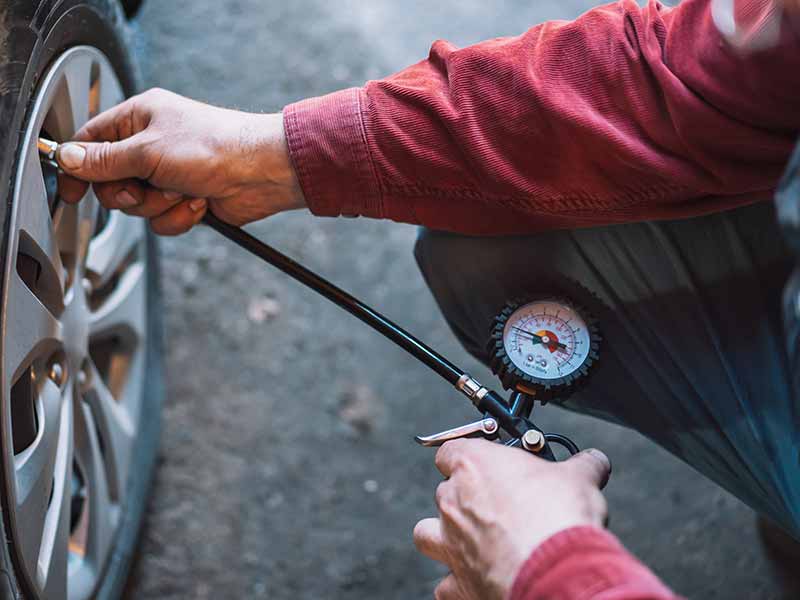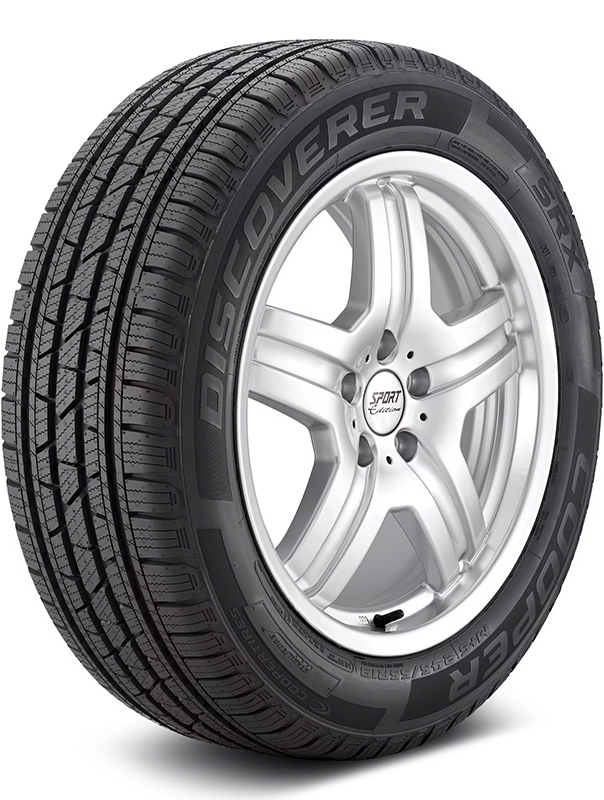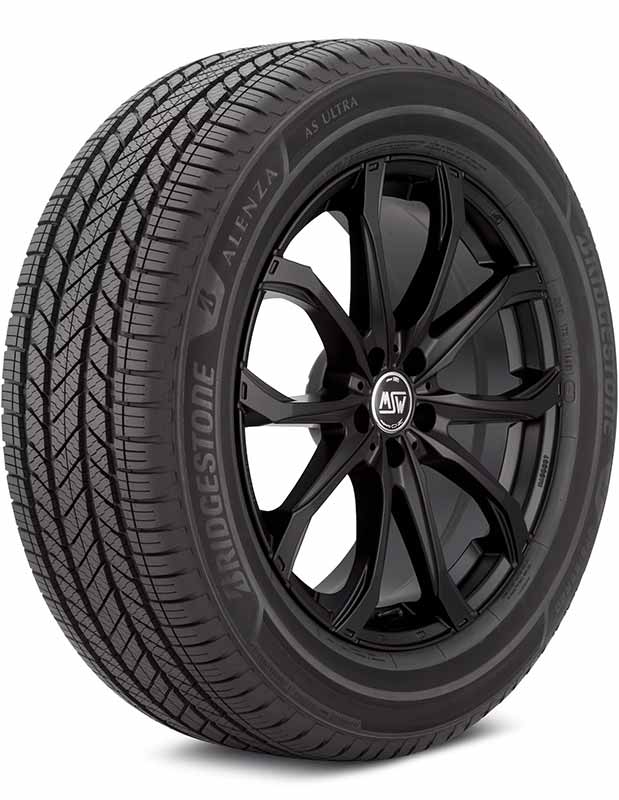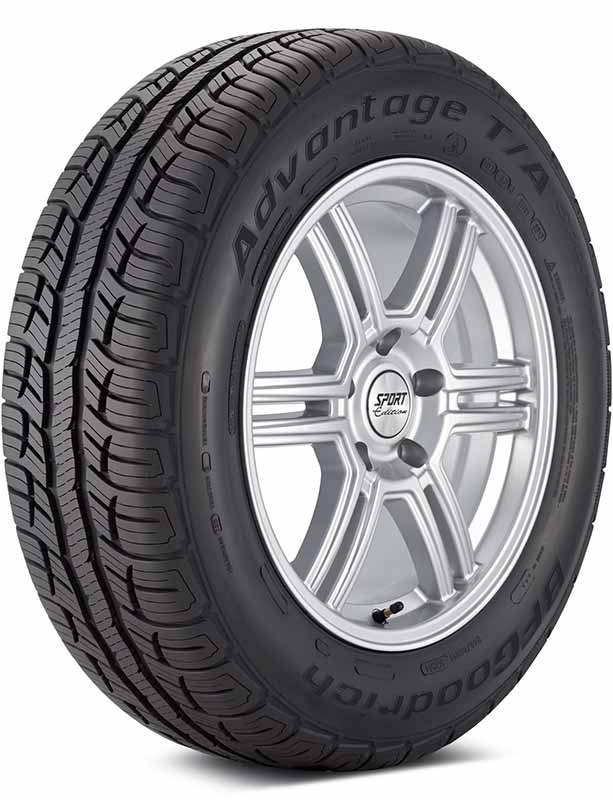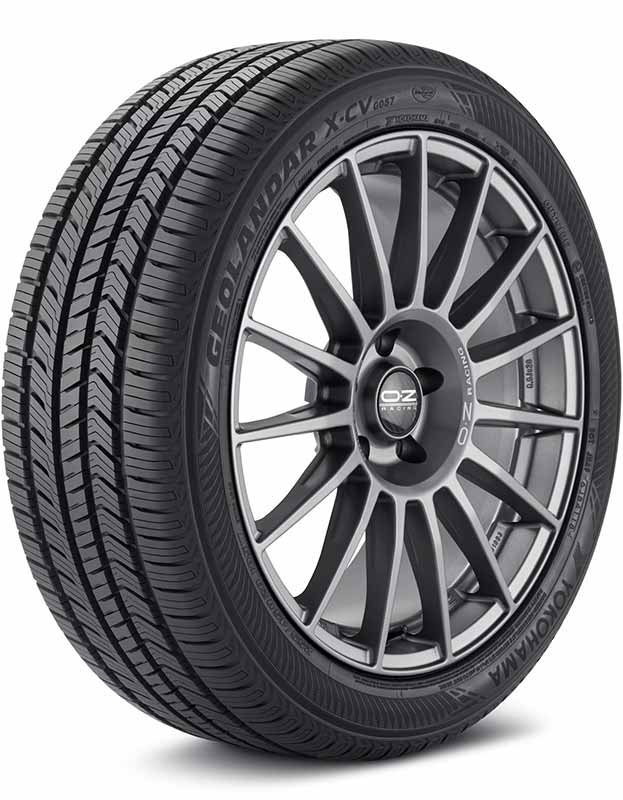There are several reasons you might want to know where the sensors of your tire pressure monitoring system are located. Maybe you’re considering new wheels or tires, you have a TPMS warning light on your dash, or you’re just curious.
We’ll cover the location of each type of tire pressure sensor, how to tell if you need a TPMS sensor replacement, and how to deal with a dead tire pressure sensor.
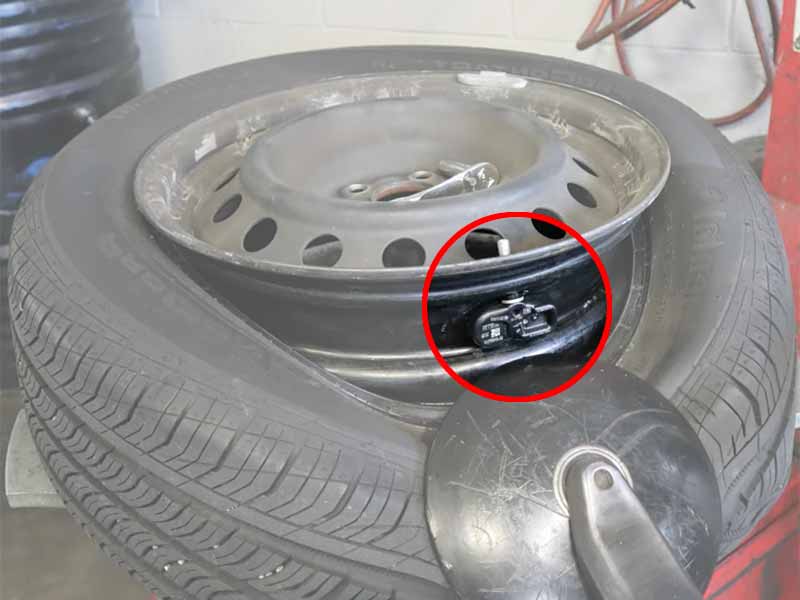
Where Are Tire Pressure Sensors Located?
The tire pressure sensor for each tire is usually located in the base of the valve stem, just inside the wheel assembly.
In some cases, the sensor will be strapped to the wheel’s barrel or incorporated into the valve stem cap.
We have a detailed article on how tire pressure monitoring systems work if that’s more what you’re interested in learning. You can also check out the following video for a brief summary.
If, on the other hand, you are experiencing a problem with a pressure sensor, I suggest you keep reading.
Let’s take a closer look.
Types Of TPMS Sensors
There are several different types of sensors that direct TPMS systems can use. Let’s review each type and explain the differences.
SNAP-IN
Snap-in sensors are a very common type of sensor. They are incorporated into the valve stem and snap into the valve stem opening in your wheel.
Most passenger cars and trucks will use this type of sensor.

Snap-In TPMS Sensor Example
CLAMP-ON
Clamp-on sensors are very similar to snap-in-style sensors. They are incorporated into the valve stem like the snap-in sensor, but they are more durably constructed, mainly using metal, and are adjustable to fit aftermarket rims better.
These differences usually cause clamp-on sensors to cost a bit more than the snap-on style. It’s common to find them used on more premium vehicles.

Clamp-On TPMS Sensor Example
BAND CLAMP
Band clamp pressure sensors are strapped to the barrel of the wheel. They are usually mounted near the middle of the barrel and aligned with the valve stem or 180º opposite the valve stem.
This style sensor has become relatively unpopular due to the varying barrel hump designs and low-profile tires.

Band Clamp TPMS Sensor Example
VALVE CAP
Valve cap sensors are usually inexpensive aftermarket sensors that come with an affordable aftermarket system. One of these systems will not be installed on a new car or truck.
The fact that a valve cap can easily be removed is a benefit for quickly knowing where each sensor is located, although they can be easily lost or stolen.

Valve Cap TPMS Sensor Example
ABS Wheel Speed Sensors
All of the previously mentioned sensors are used with Direct TPMS. A tire pressure monitoring system that doesn’t actually use pressure sensors is called Indirect TPMS.
Indirect TPMS relies on the antilock braking system wheel speed sensors to estimate a drop in air pressure in one or more tires. It detects changes in wheel speed relative to the other tires and a baseline to trigger the low-pressure light.
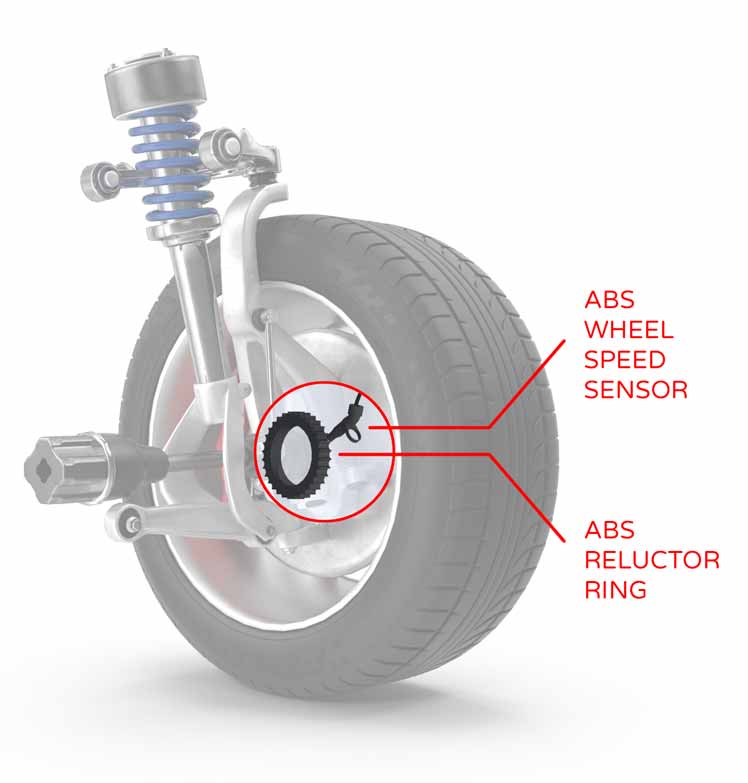
Bad Tire Sensor Symptoms
TPMS sensors have been surprisingly durable and reliable for many years, but eventually, they will fail.
Usually, tire pressure sensors fail due to a dead battery. The battery inside most of these sensors usually lasts 7 to 10 years, although they can die sooner in some circumstances.
A TPMS sensor could potentially become damaged during the tire mounting process. Also, sensors can get damaged from potholes and curb strikes, but this is unlikely unless it is quite severe.
The following are signs you may need to have a TPMS sensor replaced:
TPMS Light Flashing Then Solid
The most common sign you’ll first notice that you have a bad tire sensor is the flashing TPMS warning light. When there is a TPMS fault, the system flashes the low-pressure light on the dash each time you start your car or truck.
While a bad tire pressure sensor isn’t the only reason the system will display a flashing warning light, it is by far the most common reason.

TPMS Not Reading One Tire
Often, the beginning of a sensor failure will be the system not displaying a reading for a tire’s air pressure. Sensor damage or a low battery can make it more difficult for the sensor to communicate with the TPMS computer.
Sometimes the lack of a pressure reading is more than simply low pressure or an intermittent connection due to some damage. Complete sensor failure will also obviously make it impossible for the TPMS computer to read the pressure of an individual tire.
TPMS Showing Wrong Pressure
Hopefully, you’re aware you need to check your tire pressure regularly and not solely rely on your tire pressure monitoring system to let you know when your tires need air.
If you’re checking your tires a notice that the handheld pressure gauge and the TPMS display aren’t showing the same or similar air pressure, you could have a failing sensor.
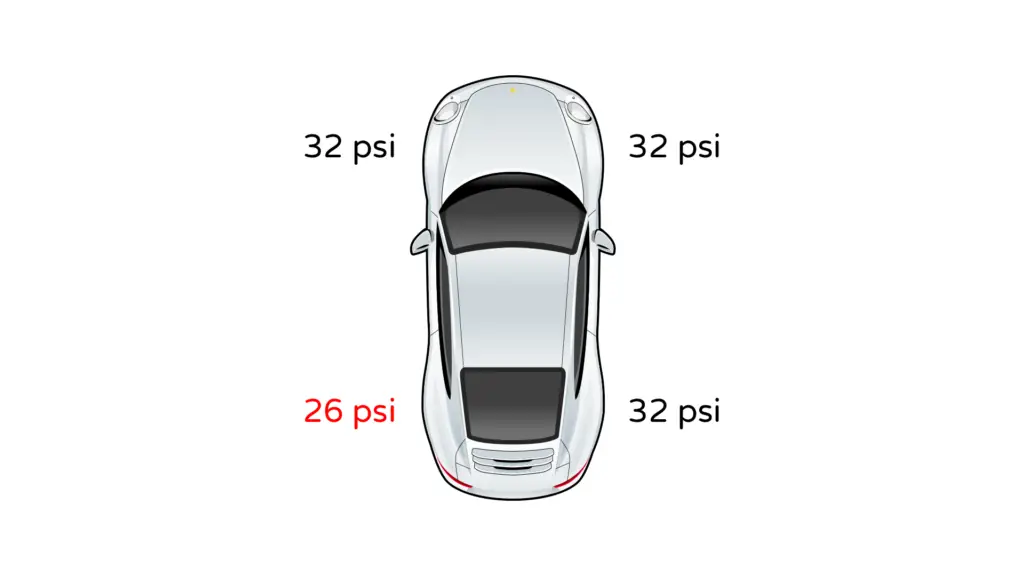
Changing Wheels With Tire Pressure Sensors
Whether you’re swapping out your winter wheels or purchasing a new set, your tire pressure monitoring system will require a working sensor for each tire to prevent it from triggering the low-pressure warning light.
Do You Need To Replace TPMS With New Wheels?
Often, the existing sensors in your wheels can be reinstalled in your new wheels. Sometimes, the old sensors won’t fit the new wheels, but usually, this isn’t a problem.
Also, it may be worthwhile to purchase a new set of tire pressure sensors if the current ones are approaching 7 years of age or are beyond that point.
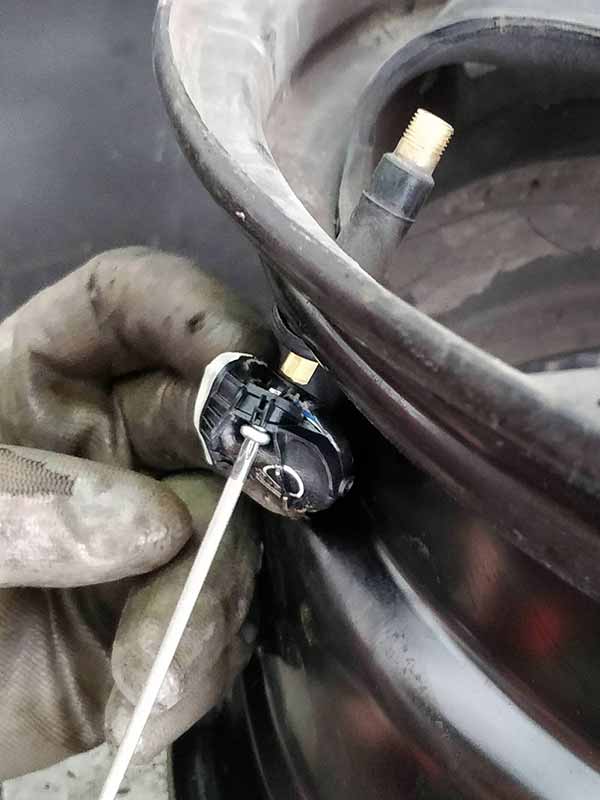
Should I Replace TPMS Sensors With New Tires?
You don’t usually need to replace the TPMS sensors when you buy new tires. However, if the sensors are approaching or beyond 7 years old, you may want to consider it.
The batteries in the sensors won’t last forever, and they often begin failing around the 7-year mark. Replacing the sensors while having new tires mounted can save money and time.
How Much To Replace Tire Pressure Sensors?
There are a few ways to deal with TPMS sensor replacement. Let’s discuss some considerations to keep in mind when it’s time to replace them.
OEM Vs Aftermarket TPMS Sensors
OEM sensors are high-quality and will likely be a solid choice. But quality aftermarket sensors are more than capable of doing an equally good job. OEM TPMS sensors are usually significantly more expensive than aftermarket sensors.
For a quarter of the price, you can usually have aftermarket sensors installed that will last just as long and still be more than capable of transmitting the air pressure within your tires to the TPMS computer.

Aftermarket Autel MaxiTPMS MX Sensor
Can I Replace Just One TPMS Sensor?
If your budget is tight, you don’t need to replace full-functioning sensors before they fail. If all of the sensors are approximately the same age, though, it does make financial sense to go ahead and replace all four sensors at the same time.
Suppose your sensors have been replaced one at a time in the past. In that case, however, there’s no reason to begin replacing them all at once unless you want to move toward replacing them all at once to prevent you from making multiple and more frequent visits to your local tire shop.
Cheapest Way To Replace TPMS Sensors
If you’re handy and willing to roll up your sleeves, it is possible to replace your tire pressure sensors.
The challenge is that you’ll need a TPMS tool to clone the unique id number from your existing sensors over to the aftermarket sensors. These tools can usually be had for less than $200, but this does not include the sensors’ cost.
Swapping TPMS sensors at home without using most of the same tools you’d find at your local tire shop is possible. I should point out that it is much more challenging to do with low-profile tires.
TPMS Sensor Battery Replacement Cost
When the battery dies in one of your tire pressure sensors, it is recommended that you replace the entire sensor. The reason is that the TPMS battery is embedded in the sensor, sealed with a silicon-like substance, and not easily replaced.
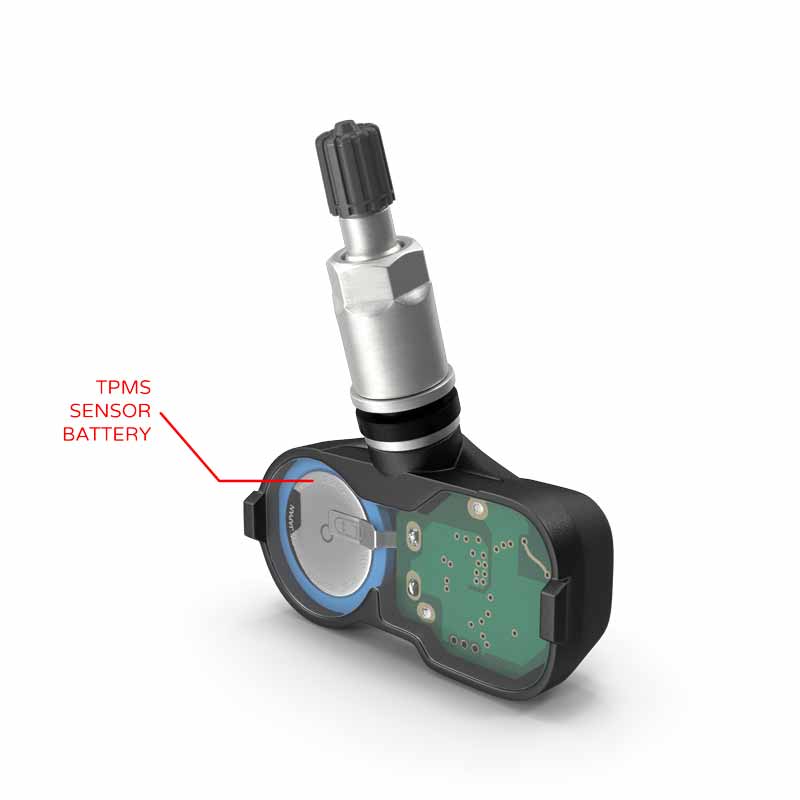
You can pick up a replacement battery for a few dollars, but the effort involved with removing the sealant and replacing the battery may not be worth the time. You can purchase quality aftermarket sensors for approximately $30, which is quite reasonable.
Who Can Install TPMS Sensors?
Various mechanics and automotive shops commonly service tire pressure monitoring system sensors. But not everyone will be equipped to perform this service.
It requires having access to the sensors and a TPMS tool for cloning, programming, and relearning (syncing) the sensors back to the system.
Dealerships will be best prepared to service the tire pressure monitoring system on your unique car or truck, although they are a more expensive choice most often.
Do Tire Shops Replace TPMS Sensors?
If you come across a tire shop that doesn’t offer TPMS sensor replacement in some form, you need to move on to a different tire shop. This is a mandatory service all tire shops should offer.
There are situations where a reputable tire shop cannot replace your TPMS sensor. Some vehicle manufacturers may have unique sensors the shop may not keep in stock and need to pick up from the local dealership.
Some TPMS systems may have unique programming requirements that typical universal TPMS scan and programming tools may not support. In this case, the tire shop may need to refer you to your local dealership or some other shop specializing in vehicles that deal with those systems.
Can I Replace TPMS Sensors Myself?
Anyone that is reasonably handy can do the job if they put their mind to it and are willing to spend the money to purchase a TPMS tool. I wouldn’t recommend this to most people, especially if you’ve never attempted something like this before.
Can I Remove My TPMS Sensors?
The federal government has required tire pressure monitoring systems to be installed in all passenger cars and light trucks sold since 2008.
The key here is the requirement for new passenger vehicles sold in the United States. This law doesn’t pertain to how you maintain your car or truck.
Is It Illegal To Remove TPMS Sensors?
State laws will govern whether you are required to have a functioning tire pressure monitoring system and no warning light displayed in your instrument cluster.
Many states will not require TPMS to function, while others will not allow your car or truck to pass an annual state inspection if there is a low tire pressure light on your dashboard.
You’ll need to check your local laws to determine whether this is a requirement you must follow in your state.
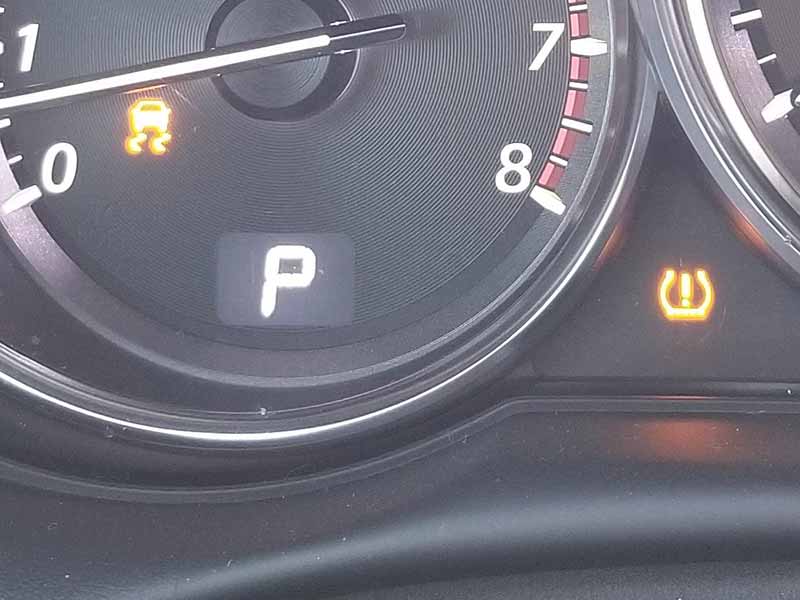
Is It OK To Drive With TPMS Light On?
If your vehicle has a tire pressure warning on the dashboard, you should pull over safely and manually check the pressures of each tire with a tire pressure gauge.
If you have ensured that your tire’s air pressure is acceptable and properly inflated, there’s no reason you can’t continue with your trip. You should be cautious and get your monitoring system fixed as soon as possible.
Driving without a functioning TPMS increases your safety risk and should be avoided if possible.
Resources
Below are some links you may find helpful when learning about tires
- TPMS basics: Types of tools and sensors explained – Tire Review
- What are the different types of tire pressure monitoring systems – Tire Rack
Final Thoughts
Tire pressure sensor replacement is usually best left to your local tire professional. They have the necessary equipment and can quickly and relatively inexpensively handle the job.
Keeping your TPMS system in good working condition is important to help you be quickly informed about a flat tire or severely under-inflated tires. Unusually low tire pressure can be very dangerous and must be fixed promptly.
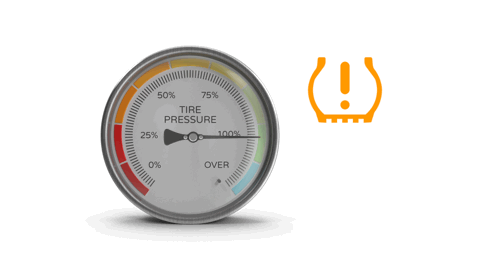
You still need to check the pressure in your tires, though, regularly. Tire pressure monitoring systems are only designed to warn when a tire has air pressure lower than 25% of the target pressure.
Not staying on top of it will cause your tire life to be shorter, increase fuel consumption, and reduce handling performance.
Good luck and happy motoring.
